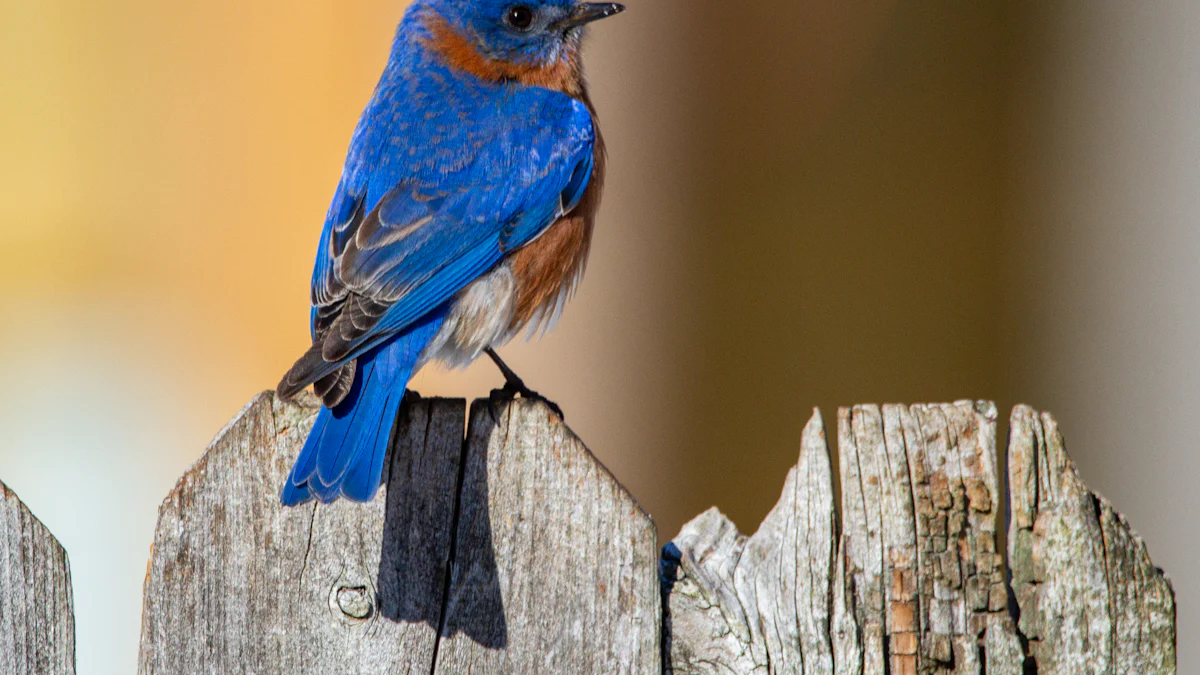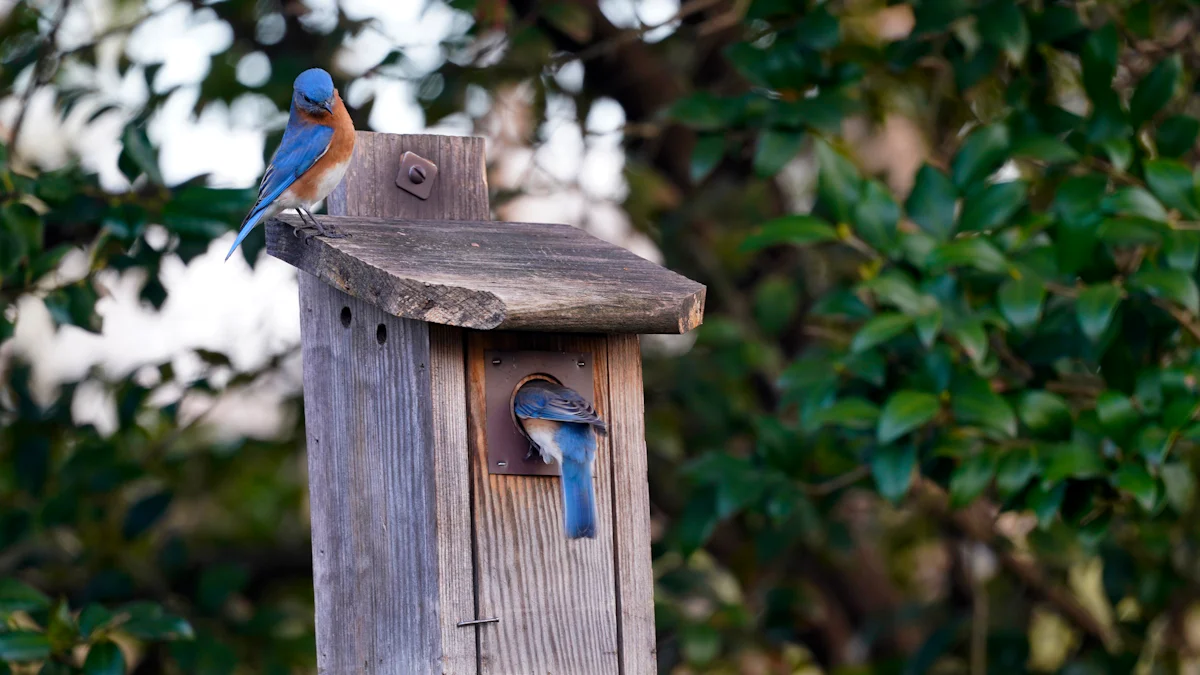
Mealworms are a powerhouse of nutrition for wild birds, offering essential protein, fats, and fiber that fuel their daily activities. With up to 50% protein and 25% fat, they provide the energy needed for muscle development, feather growth, and survival during challenging seasons. These tiny insects closely resemble the natural diet of many bird species, making them an irresistible and healthy choice. By adding wild mealworms to your feeding routine, you can attract a variety of birds while supporting their health during nesting, migration, or cold weather.
Key Takeaways
- Mealworms are a nutritional powerhouse for wild birds, providing up to 50% protein and 25% fat, essential for energy and growth.
- Feeding live mealworms during breeding season offers hydration and nutrients crucial for raising healthy chicks.
- Dried mealworms are a convenient alternative; soaking them in water enhances their appeal and provides extra hydration for birds.
- Position feeders in safe, visible locations to attract birds and ensure they feel secure while feeding.
- Combine mealworms with other foods like seeds and fruits to create a balanced diet that attracts a diverse range of bird species.
- Adjust your feeding habits according to the seasons to meet the specific nutritional needs of birds during breeding, migration, and winter.
- Proper storage of mealworms is essential; keep dried ones in airtight containers and live ones in ventilated spaces to maintain freshness.
The Nutritional Benefits of Wild Mealworms

High Protein Content for Energy and Growth
Protein is the building block of life, and wild mealworms are packed with it. With up to 50% protein content, these tiny insects provide birds with the essential amino acids they need for muscle development and feather growth. Protein plays a critical role in helping birds stay strong and active, especially during demanding periods like nesting or migration. By offering wild mealworms, you give birds the fuel they need to thrive and maintain their energy levels throughout the day.
Scientific Research Findings: Studies published in journals like PLOS One highlight that mealworms deliver high-quality protein along with vital vitamins and minerals. These nutrients are essential for birds’ overall health and growth.
Adding mealworms to your bird-feeding routine ensures that your feathered visitors get the protein boost they need to stay healthy and vibrant.
Rich in Fats for Sustained Energy
Fats are another key component of wild mealworms, making up about 25% of their nutritional profile. Birds rely on fats as a concentrated energy source, especially during colder months or long migrations. Unlike quick-burning carbohydrates, fats provide sustained energy, helping birds endure harsh weather and extended flights.
Mealworms are particularly beneficial during winter when natural food sources become scarce. By feeding them to birds, you help them build the energy reserves they need to survive and stay warm. This makes mealworms an invaluable addition to your backyard feeding station.
A Natural and Nutritious Food Source
Wild mealworms closely mimic the natural diet of many bird species. Insects form a significant part of what birds eat in the wild, so mealworms feel familiar and appealing to them. They also contain fiber, which aids digestion, and calcium, which supports strong bones and eggshell production.
Did You Know? Mealworms are especially helpful during the breeding season. Live mealworms provide moisture and nutrients that are crucial for raising healthy chicks.
By offering mealworms, you create a natural and nutritious feeding environment that supports birds’ health year-round. Whether it’s summer or winter, mealworms can make a noticeable difference in the well-being of your local bird population.
How to Feed Wild Mealworms to Birds
Feeding wild mealworms to birds can be a rewarding experience, but knowing the right way to do it ensures you get the best results. Whether you’re using live or dried mealworms, understanding how to serve them properly can make your backyard a haven for feathered visitors.
Choosing Between Live and Dried Mealworms
When deciding between live and dried mealworms, consider the needs of the birds and your convenience. Live mealworms closely mimic the natural diet of wild birds. They are especially beneficial during spring migration and nesting season, as they provide hydration and essential nutrients for growing chicks. Live mealworms also attract a wider variety of bird species, making them a great choice if you want to see new visitors in your yard.
On the other hand, dried mealworms are a convenient alternative. They are easy to store, require no maintenance, and still offer plenty of protein and fat. While they lack the moisture content of live mealworms, soaking them in water can help rehydrate them, making them more appealing and nutritious for birds.
Pro Tip: Use live mealworms during breeding seasons for maximum benefits and switch to dried mealworms for year-round feeding convenience.
Best Practices for Serving Mealworms
Serving mealworms the right way can make a big difference in attracting birds. Start by placing mealworms in a shallow dish or tray feeder. This makes it easier for birds to spot and access them. If you’re using live mealworms, ensure the feeder has smooth sides to prevent them from escaping.
Offer mealworms in moderation. While they are nutritious, overfeeding can lead to dependency. A small handful per day is usually enough to supplement the birds’ diet without disrupting their natural foraging habits.
Position the feeder in a safe and visible location. Birds prefer areas where they feel secure from predators. Placing the feeder near shrubs or trees can provide them with a quick escape route if needed.
Did You Know? Birds like robins, bluebirds, and wrens are particularly fond of mealworms. Keep an eye out for these species when you start feeding them.
Combining Mealworms with Other Foods for a Balanced Diet
Mealworms are a fantastic treat, but birds need a variety of foods to stay healthy. Combine mealworms with seeds, suet, or fruits to create a balanced diet. For example, mix dried mealworms with sunflower seeds or scatter them alongside chopped apples to attract a diverse range of birds.
Offering a mix of foods not only supports the birds’ nutritional needs but also encourages different species to visit your yard. Some birds may prefer seeds, while others might go straight for the mealworms. By providing options, you cater to a broader audience.
Quick Tip: Rotate the types of food you offer to keep birds interested and coming back for more.
Advanced Tips for Maximizing the Benefits of Wild Mealworms
Soaking Dried Mealworms for Hydration
Dried mealworms are convenient, but they lack the moisture found in live ones. Soaking them in water can solve this issue and make them more appealing to birds. Hydrated mealworms provide an extra source of water, which is especially helpful during hot summers or dry winters when natural water sources might be scarce.
To soak dried mealworms, place them in a bowl of warm water for about 20-30 minutes. Once they plump up, drain the excess water and serve them in a shallow dish. Birds like robins and bluebirds often prefer this softer texture, making it easier for them to eat.
Quick Tip: Use the leftover soaking water to hydrate plants in your garden. It’s a simple way to recycle nutrients while keeping your yard eco-friendly.
Feeding Mealworms During Key Seasons
Timing matters when feeding wild mealworms. Birds have specific needs during different seasons, and mealworms can play a crucial role in meeting those needs. During the breeding season, mealworms provide essential protein and fats that help adult birds raise healthy chicks. Live mealworms are particularly beneficial at this time because they also offer hydration.
In winter, mealworms become a lifeline for birds when natural food sources are scarce. Their high-fat content helps birds build energy reserves to stay warm. Offering mealworms during migration periods can also give birds the energy boost they need for long flights.
Historical Note: In the 1980s, dried mealworms were used to feed baby birds and even nighthawks, highlighting their importance in supporting bird populations during critical times.
By adjusting your feeding habits to match the seasons, you can make a significant difference in the survival and health of your feathered visitors.
Proper Storage for Mealworms
Storing mealworms correctly ensures they stay fresh and safe for birds to eat. For dried mealworms, keep them in an airtight container in a cool, dry place. Exposure to moisture can cause mold, which is harmful to birds. If you buy in bulk, consider dividing them into smaller portions to maintain freshness.
Live mealworms require a bit more care. Store them in a ventilated container with a layer of bran or oats as bedding. Keep the container in a cool area, like a basement or refrigerator, to slow their growth and extend their lifespan. Feed them small amounts of vegetables like carrots or potatoes to keep them hydrated and nutritious.
Pro Tip: Always check for signs of spoilage before serving mealworms. Fresh mealworms, whether live or dried, ensure the best nutrition for your backyard birds.
By following these advanced tips, you can maximize the benefits of wild mealworms and create a thriving environment for your local bird population.
Wild mealworms offer an incredible way to support the health and energy of wild birds throughout the year. By incorporating them into your feeding routine, you can attract a variety of species while providing essential nutrients during critical times like breeding or migration. Following advanced tips, such as soaking dried mealworms or feeding them seasonally, ensures you maximize their benefits. Start today, and transform your backyard into a vibrant haven for birds. Not only will you enjoy the beauty of birdwatching, but you’ll also play a vital role in supporting local bird populations.


